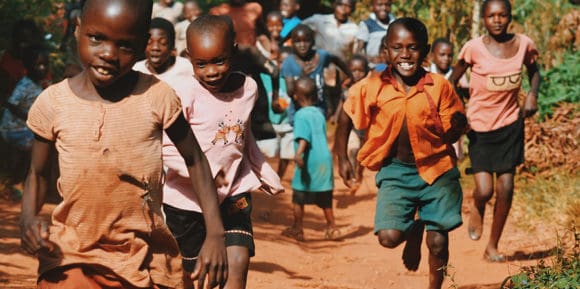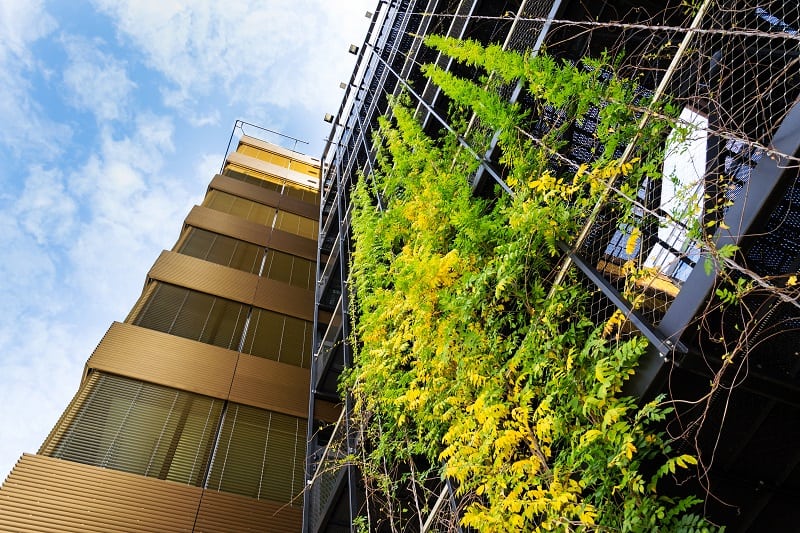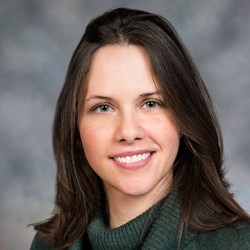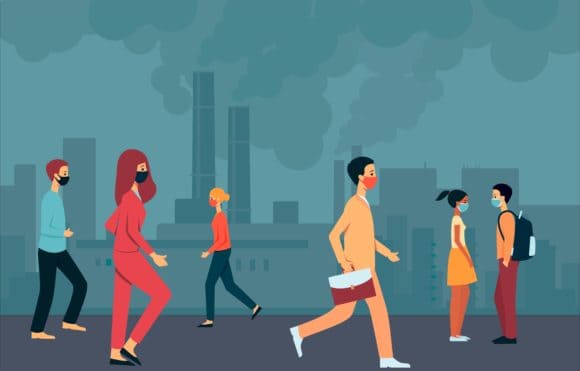Dec 10, 2019 | Alumni, IIASA Network, Women in Science
By Luiza Toledo, Science Communication Fellow 2019
Luiza Toledo writes about how the IIASA Women in Science Club are creating a safe space to talk about and advance gender equality in science.
Sustainable Development Goal (SDG) 5 is to achieve gender equality and empower all women and girls. A recent report titled, Harnessing the power of data for gender equality produced by Equal Measures 2030, however, shows that we still have a long way to go before this goal becomes a reality.
Countries in Europe and North America, along with two in the Asia-Pacific region (Australia and New Zealand), achieved the highest scores in terms of gender equality on the 2019 SDG Gender Index. However, even in the 20 top scoring countries, there are still indicators that score low. This suggests that even the countries with high overall scores for gender equality are struggling with thorny issues – one of them being women in science and technology research positions.
As an international institute, IIASA was founded on the principles of equal opportunity, which naturally includes equality in terms of gender balance. The institute’s 2018 Annual Report shows that the number of early-career female IIASA scientists has steadily been growing over the last few years. Since 2016, the number of female researchers increased by 24%, with most of the new hires joining as research assistants. Despite this increasing trend, the gap for PhD level researchers is as high as it has ever been with men outnumbering women four to one. In addition, there is a lack of female scientists in the over-40 age group, which is by no means unique to IIASA. Researchers who study gender and science have even compared women’s careers in science with a leaky pipeline – a flawed channel system that loses quantity before it reaches the destination.

©Liebentritt_Christoph
Even though it is unrealistic to expect a 100% retention of women in science related careers (or any career for that matter), male researchers still have a much higher retention rate in scientific careers than their female colleagues do, and this is where the problem lies. According to the IIASA Diversity and Work Environment Report from 2015, male researchers at IIASA on average stay with the institute for seven years, whereas female researchers stay for only four years. To overcome the leaky pipeline effect, we should start creating a workplace culture that aims to recruit and retain women and is more open to discussing and tackling gender issues in academia, thereby developing a safe networking space.
The Women in Science Club (WISC) at IIASA is a great example of a safe networking space that embraces gender equality and shows the power of women that support other women. Co-led led by Amanda Palazzo, a researcher in the institute’s Ecosystems Services and Management Program, and IIASA Network and Alumni Officer Monika Bauer, the club has a self-proclaimed mission to build a network where women connected to science can share experiences, empower themselves, and highlight the work of other women connected to science.
The idea of creating a network of women in science came about in the fall of 2016 when former Finnish President, Tarja Halonen, visited IIASA. During her visit, she asked to meet with the women of IIASA to talk about diversity and equity issues. This conversation was the first of several meetings that are now attended by women (and men) across the institute under the auspices of WISC.
“The conversation was inspiring and after that first meeting, a few of us thought about organizing a club to continue working on the issues that came up from our discussion with President Halonen,” explains Palazzo.
Nowadays, the WISC organizers arrange lunchtime meetings known as “Meet, greet, and eat” sessions to coincide with visits to IIASA by prominent researchers and other professionals from IIASA and elsewhere who want to share their experiences.
“I’ve found that more experienced and senior women who may have been the only women in their departments at the start of their careers or may have had to fight for a seat at the table are often the quickest to agree to meet with WISC. This shows me that they see the value in a club like ours,” Palazzo adds.
Although the number of women now engaged in science is the highest it has ever been, there are still too few women in positions of leadership. According to Palazzo, at IIASA, this situation is set to change with the institute’s newly appointed Deputy Director General for Science who joined IIASA in November this year.
“I’m excited that Leena Srivastava has joined us and I hope that this is just the start of many changes at IIASA that will bring more women into positions of leadership,” she says.
Palazzo says that the most valuable thing that she has learned so far is that no two women have the same story or path to success.
“I found it reassuring to hear successful women tell us that when they were starting out or even several years into their careers they also didn’t know exactly what contribution they wanted to make. They were learning as they went along. It has also been useful to hear women talk about building resilience to negative comments or behaviors and recognize that these behaviors reflect the other person’s fear and insecurity. In the end, the Women in Science Club is a place to share, contribute, listen, and learn. We want women connected to science to feel that they are a member of our community, that they have a seat at our table, and that they belong here,” she concludes.
Note: This article gives the views of the author, and not the position of the Nexus blog, nor of the International Institute for Applied Systems Analysis.
Nov 6, 2019 | Climate, Climate Change, Health, Young Scientists
By Luiza Toledo, IIASA Science Communication Fellow 2019
2019 YSSP participant Rory Gibb discusses his work at IIASA developing models to understand the effects of future land use, climate, and socioeconomic change on disease risk, focusing on Lassa fever in West Africa as a case study.

© Seth Doyle | Unsplash
Climate change is a fact and one of the most important environmental changes that populations will face in the coming decades. Changes in areas such as agriculture, energy, economics, and biodiversity, together with other natural and human-made health stressors, influence human health and disease in numerous ways. This is evident in the fact that the emergence and spread of many infectious diseases is on the rise, many of them transmitted from wildlife to humans – a trend that has been associated with the environmental changes we are currently experiencing. Warmer average temperatures can mean longer warm seasons, earlier spring seasons, shorter and milder winters, and hotter summers, during which the prevailing conditions may affect the population cycles of hosts, vectors (such as mosquitoes and ticks) and pathogens, thus increasing the incidence of certain vector-borne or zoonotic diseases. Changes to land use, such as expansion of agriculture, can impact ecological communities and bring people into greater contact with wildlife, again potentially facilitating the spread of pathogens.
Rory Gibb, a 2019 Young Scientists Summer Program (YSSP) participant, is doing research to understand how global environmental changes – and in particular interactions between land use and climate change – affect zoonotic (animal-borne) infectious diseases. He applied for the YSSP this summer because of the institute’s research portfolio in different dimensions of human wellbeing, including poverty and inequality, food security, and water resilience. He hopes to contribute a dimension about infectious diseases.

©Liebentritt_Christoph | IIASA
Gibb is interested in understanding how the same kind of environmental pressures that affect biodiversity and ecosystems, such as agricultural expansion, intensification and urbanization, may also impact human health. He points out that even though many infectious diseases are widely studied, such as dengue fever and malaria, we still have a patchy understanding of the environmental factors driving many more neglected or recently emerging diseases – as is the case with Lassa fever, which occurs only in West Africa.
Lassa fever is an acute viral hemorrhagic illness recognized by global health institutions as an important rodent-borne disease, however, many important aspects of the disease’s ecology, epidemiology, and distribution remain poorly understood.
“We know that the spread of Lassa fever is very dependent on the environment, so it is sensitive to climate change, land use change, and other ecological changes, but we don’t have a very clear understanding of where it occurs and how many people are being affected every year,” Gibb explains.
Gibb aims to use current knowledge of the local ecological processes that drive the disease, including spatial modeling to determine the extent of the disease’s rodent reservoir host and its interactions with people, to develop a better understanding of the number of people infected with Lassa fever in West Africa. His YSSP project is focused on understanding how sensitive current patterns of disease risk may be to plausible future agricultural, climatic, and economic change in the region. To do this, he is projecting disease risk over large geographical areas using remotely sensed data on climate and landscape factors, and evaluating the effects of future socio-environmental scenarios on the predicted incidence of human disease. Ultimately, he is interested in how to develop better models to understand the relationship between environmental change and diseases caused by bacteria, viruses, and parasites that spread between humans and animals. He hopes that his research outcomes can help to guide disease surveillance efforts for policymakers.
“The spatial modeling work that I am doing will hopefully be useful in terms of giving some insight into regions of West Africa that are predicted to have a very high risk for Lassa fever, both now and under expected environmental changes, to assist in targeting public health interventions such as improving diagnostic test access. We can also identify important knowledge gaps, such as areas that are highly environmentally suitable for Lassa transmission, but in which the disease is apparently absent – these may be useful locations for intensified surveillance, or for showing that there are other ecological or epidemiological processes occurring that we are not accounting for.”
The impacts that environmental changes have on our health remind us how dependent we are on nature and how our own health depends on that of the environment. Environmental and human health cannot and should not be seen as two separate things.
“I want to do work that highlights the importance of understanding human dependence on nature and the necessity of understanding how we can preserve the health of both ecosystems and people,” Gibb concludes.
Note: This article gives the views of the author, and not the position of the Nexus blog, nor of the International Institute for Applied Systems Analysis.
Aug 27, 2019 | Climate Change, Environment, Risk and resilience, Young Scientists
By Luiza Toledo, IIASA Science Communication Fellow 2019
2019 YSSP participant Regina Buono investigates how the law can support or impede the use of nature-based solutions and help facilitate adaptation to climate change.
Recognizing the need for a systemic change is the first step to overcoming environmental challenges like climate change. In theory, governance systems can be designed and arranged to facilitate and embrace adaptation to climate change. Developing a legal framework that supports such an adaptation is, however, a big challenge. Learning how to manage the environmental crisis we currently find ourselves in while still being able to grow economically further complicates matters. According to Regina Buono, a participant in this year’s IIASA Young Scientist Summer Program (YSSP), nature-based solutions could be an alternative option that offers a multitude of benefits in terms of how this dual goal of economic growth and sustainability can be achieved. Buono’s research will contribute to IIASA as a partner in the EU Horizon 2020 project, PHUSICOS, which is demonstrating how nature-based solutions can reduce the risk of extreme weather events in rural mountain landscapes.

Outdoor green living wall, vertical garden on modern office building | © Josefkubes | Dreamstime.com
Nature-based solutions are actions to protect, manage, or restore natural ecosystems that address societal challenges, such as water security, pollution, or natural disasters – sometimes simultaneously. These solutions take advantage of the system processes found in nature – such as the water regulation function of wetlands, the allowance of natural space in floodplains to buffer flooding impacts, water storage in recharged aquifers, or carbon storage in prairies – to tackle environmental problems. This concept is now widely used to reframe policy debates on biodiversity conservation, climate change adaptation and mitigation strategies, urban resilience, as well as the sustainable use of natural resources.
As part of her research, Buono is exploring how the law can support or impede the use of nature-based solutions and considering how we can make legal systems more adaptive so they can help facilitate societal adaptation to a more uncertain world under ongoing and future climate change.
“My research is about using the law as a tool that works for us, rather than one that, because of its historic interest in stability, gets in the way,” she says.

Regina Buono, YSSP participant. | © Buono
Buono started her career as a lawyer based in the US. In her first job she was assigned to work with water issues and according to her, it was “love at first sight”. Following that first assignment, she continued to work on finding market-based solutions for issues related to endangered species. She decided to pursue a PhD in public policy in 2016, and soon after was asked to join the external advisory board to the Nature Insurance Value: Assessment and Demonstration (NAIAD) project in Europe. While attending the first meeting, she realized that there were no lawyers or legal scholars among the project researchers. As a lawyer, she could see that there was a gap in understanding how law and regulations would impact the uptake, development, and proliferation of nature-based solutions.
Working with NAIAD, she developed her PhD dissertation to address this gap and advance understanding around the role of the law in nature-based solutions, both in terms of governance in implementation and practice and the potential for governance innovation that better supports and promotes future adaptation.
“My YSSP project here at IIASA focuses on the city of Valladolid, Spain, and examines the legal context around the implementation of a collection of nature-based solution projects. I am trying to draw insights from these that could perhaps also be applied to other cases,” she explains.
Buono is doing a critical qualitative study that integrates analyses of interviews and policy documents using NVivo, a qualitative data analysis computer software package specifically designed to work with very rich text-based and/or multimedia information, together with legal analysis. She says that there is still a lot of work to be done to adapt to climate change and an interdisciplinary cross-sector effort will be necessary.
The preliminary results from her YSSP research point to a number of constraints and facilitating factors related to law and regulation. She says that the lack of explicit legal authorization for nature-based solutions that she identified in her study, strict water quality regulations, and bureaucratic hurdles could be some of the factors that constrain the implementation of nature-based solutions. However, flexibility in the law and a polycentric governance structure was identified as facilitating factors that encourage local entities to opt for nature-based solutions.
Buono hopes that her research will help decision makers to assess and address legal components that guide, structure, or impede the use of nature-based solutions, and to consider how the law could be evolved to create a more enabling environment for more adaptive governance arrangements that would better support nature-based solutions.
“Our policies and infrastructure are going to have to change to be able to deal with the impacts that we are already experiencing. Nature-based solutions and a shift toward adaptive governance could help us navigate more gracefully in these important transitions,” she concludes.
Note: This article gives the views of the author, and not the position of the Nexus blog, nor of the International Institute for Applied Systems Analysis.
Aug 21, 2019 | Air Pollution, Economics, Environment, Health, Young Scientists
By Luiza Toledo, IIASA Science Communication Fellow 2019
2019 YSSP participant Muye Ru investigates the main health impacts of air pollution and what this means for the economy and social development of a country.

© Sabelskaya | Dreamstime.com
Air pollution is one of the greatest environmental health risks of our time. It is the second most common cause of non-communicable diseases like stroke, cancer, and heart disease, and it annually leads to around seven million premature deaths.
According to the World Health Organization (WHO), almost 90% of people worldwide breathe polluted air. Even though we can say that air pollution is impartial, affecting people regardless of gender, race, social class, or economic status, the burden of ill health caused by air pollution primarily affects middle and low-income cities and marginalized populations. The economic cost of air pollution and its impacts on health is known as non-market costs and includes the monetized welfare costs of mortality (premature deaths), and of the disutility of illness (pain and suffering).

Muye Ru, YSSP participant. © Ru
Muye Ru, a 2019 Young Scientist Summer Program (YSSP) participant, is studying the main health impacts of air pollution and what this means for the economy and social development of a country. Her project will establish a methodology based on meta-analysis, to estimate the economic costs of selected morbidity outcomes of exposure to air pollution in a population, and test its application at various geographical scales (national, regional, and global).
“The idea behind my work is that bad air quality causes a burden for societies. We know that many people will die or be disabled because of it, but we don’t have a very good understanding of exactly what the social and economic cost of that is,” explains Ru.
It is easy to grasp that the burden of sick and disabled people will affect the economy of a country. For example, imagine a scenario where a family member is diagnosed with lung cancer. The illness will most probably influence the entire family in terms of loss of income when the person is unable to work due to his/her illness, or reduced funds available for savings and necessities like food and utilities due to the cost of treatment.
Ru’s project specifically focuses on the rate and duration of air pollution related-diseases in populations. According to her, this rate is extremely important once you start studying the high economic losses and social disturbances caused by illness and healthcare expenditures.
“It’s about how people are disabled, the effect of this burden on their lives, as well as how these changes in their lives are impacting the economy,” she says.
Ru hopes that her work will be useful to policymakers in creating and applying policies to combat air pollution that will lead to multiple benefits for the economy, the environment, and human health. She wants her research to make people more aware of how they are contributing to air pollution and how the cost of it affects everyone’s lives.
Note: This article gives the views of the author, and not the position of the Nexus blog, nor of the International Institute for Applied Systems Analysis.
Jul 26, 2019 | Environment, Systems Analysis, Young Scientists
By Luiza Toledo, IIASA Science Communication Fellow 2019
2019 YSSP participant Roope Kaaronen investigates how changes in the urban environment affect people’s behavior and whether they will find it easy to engage in sustainable behavior in different environments.
Technological and industrial advances in many sectors have made our lives easier, but they have also contributed to a less sustainable way of life. From the industrial revolution to the present day, CO2 emissions have increased by 40% and about 95% of this increase can be attributed to human actions. We can therefore say that our actions shape the environment we live in. But how does the environment we live in in turn shape our attitudes and behavior?
Apart from the vast amount of information available to us and an increasing awareness of more sustainable consumption, our society still has a growing carbon footprint, which means that attitudes around sustainability are not really translating into behavior. There is a gap between having environmental knowledge and environmental awareness, and displaying pro-environmental behavior. Apparently, the answer to translating attitudes into behavior could have more to do with design than awareness.

Roope Kaaronen, YSSP participant. © Kaaronen
Roope Kaaronen, a member of this year’s IIASA Young Scientists Summer Program (YSSP) cohort, has made it his goal to study behavior change and the adoption of sustainable habits. His project investigates how changes in the urban environment will affect people’s behavior and whether people will find it easy to engage in sustainable behavior in different environments. He is looking at how pro-environmental behavior patterns emerge from processes of social learning (such as teaching and imitation), habituation, and niche construction (a process where agents shape the environment they act in).
“I am particularly interested in how the physical environment shapes our behaviors, because people often assume that they have a pro-environmental attitude or values, and that this automatically translates into sustainable behavior. Research however shows that this is often not the case. So actually, the physical environment is more important in determining how we behave than we think,” he explains.
For instance, suppose that you would like to start recycling more but your city doesn’t have a proper selective waste collection system. Because the infrastructure needed to promote pro-environmental behavior is missing, this can lead to feelings of frustration and hopelessness, which could in turn cause people to give up on even trying to engage in the behaviors that could lead to more sustainable outcomes.
Kaaronen uses agent-based modeling in his research to model the cultural evolution of sustainable behavior patterns. The idea is to study how opportunities for action can have self-reinforcing effects on behavior. He included agents who move on a “landscape of affordances” in his model, and these agents are connected to each other in a social network. In this context, the term “agents” represents individuals or groups in society.
Social psychology describes pro-environmental behavior as conscious actions made by an individual to minimize the negative impact of human activities on the environment. For Kaaronen, this means that we can only achieve sustainable goals if we change our behaviors or habits very quickly.
“I think that it’s not realistic to expect that technology will solve all our problems. We will have to start behaving differently,” he says.
Unfortunately, people very often assume that individuals’ actions don’t have as much impact as collective actions, leading them to postpone their own pro-environmental behaviors. There have been a lot of discussion in the media around whether one person’s attitude could have an impact on the environment, in other words, should the focus be on each individual making changes in the way they live, or should the focus be on whole systems changing. To Kaaronen, these two approaches are connected.
“Systems emerge from individuals and their collective interactions. As we are social animals, our actions are inevitably copied and imitated by other people. This means that a person who has a lot of influence will have many people copying them. In other words, whenever we talk about private environmental behavior, such as recycling or using public transport rather than driving a car, we tend to think that this is just our personal behavior, but of course, our choices form part of a much bigger system,” says Kaaronen.

Woman helps clean the beach of garbage. © Freemanhan2011 | Dreamstime.com
We should be aware that we need politicians to make our pro-environmental choices as easy as possible. As individuals, we have responsibilities because we are part of the social system, but it is up to the political system to encourage this kind of behavior on a larger scale.
In 2007, the Danish government developed a strategy that prioritized bicycling as method of transport in Copenhagen. Since then, the city has seen a rapid increase in the number of people cycling, showing that affordance is important to promoting behavior change. Kaaronen’s model is able to reproduce patterns of behavior change, such as the case of Copenhagen.
“I think in terms of policy, what I am doing is quite applicable in urban design. What I am trying to show is that if we make sustainable behavior easy and lucrative, this can lead to long lasting and self-reinforcing effects on the emergence of sustainable cultures,” he comments.
The advent of social media has made it easy to influence people’s attitudes and behavior. The model that Kaaronen is using also illustrates how behavior change can spread through tightly knit social networks, and how social learning in networks can have self-reinforcing effects on behavior change. He says that we should use this tool to spread awareness about sustainable habits and initiate cultural evolution towards sustainable societies. In terms of behavior, living by example is very important, since it is necessary to show that living a sustainable life is both possible and enjoyable. Kaaronen himself lives this philosophy as he doesn’t drive and tries not to eat meat. He also stopped flying two years ago.
“I am just travelling on the ground right now. It is part of a campaign in the academic environment called #FlyingLess. Buses and trains can take you to interesting places, but it of course takes up a lot of time and I realize that not everyone can do this because they live in places that aren’t well connected.”
We are so used to unsustainable forms of behavior like constantly driving, flying, and consuming meat, but the world needs to realize that this way of living cannot last forever. It is unsustainable. Even though it may appear challenging to change our behavior, Kaaronen’s research offers hope to keep believing that it is possible to change our unsustainable behavior and achieve a sustainable society and environment.
“I think it is important to show that these things are actually possible. We can reach a tipping point towards sustainable systems if enough people just start practicing what they preach,” he concludes.
Note: This article gives the views of the author, and not the position of the Nexus blog, nor of the International Institute for Applied Systems Analysis.










You must be logged in to post a comment.